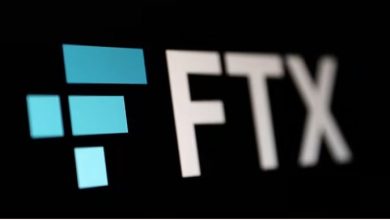Bitcoin Mining Difficulty Hits New All-Time High: What It Means for Miners and Network Security
The Bitcoin network is stronger and more competitive than ever, as its mining difficulty has just surged to a new all-time high of 142.3 trillion. This marks a significant 29.6% increase since the beginning of the year and comes just one week after the previous record was set.
This surge in difficulty corresponds with a record-high network hashrate, which has now reached 1.09 Zetta hashes per second (ZH/s). While these massive numbers may seem abstract, they are a powerful indicator of the Bitcoin network's health, security, and the intense competition among miners.

What Are Bitcoin Mining Difficulty and Hashrate?
To understand the significance of this news, it's important to know these two key terms:
The Bitcoin protocol is designed to produce a new block roughly every 10 minutes. To maintain this schedule, the difficulty is recalibrated every 2,016 blocks (approximately every two weeks). When the hashrate increases (more miners join), the difficulty rises to make mining harder. If the hashrate falls, the difficulty decreases.
A "Living Organism": Why Rising Difficulty is a Healthy Sign
According to industry experts, a rising difficulty is a hugely positive sign of a robust and thriving network. CJ Burnett, Chief Revenue Officer at Compass Mining, described the difficulty adjustment as one of Bitcoin’s “most elegant and underappreciated” features.
“It allows the network to recalibrate itself, almost making it akin to a living organism that self-regulates,” Burnett told Decrypt.
A rising difficulty indicates that more miners are investing significant capital into the network, confident in its long-term profitability. This creates a fiercely competitive environment that, much like the Bitcoin halving, "often forces less efficient miners to go offline, while professionalized miners with strong infrastructure and low-cost energy can thrive," Burnett added.
How Do Miners Stay Profitable Amid Rising Competition?
A common concern is that as difficulty rises, mining becomes less profitable. However, two key factors help professional miners offset these increased operational costs:
- A High Bitcoin Price: The most significant factor is the price of Bitcoin itself. When BTC's value is high, as it was when setting new records last month, the rewards for mining a block are worth more in fiat terms, easily covering the increased computational expense.
- Hardware Efficiency: Advances in mining technology play a crucial role. Alex de Vries, founder of Digiconomist, explained that as new generations of mining equipment come online, their energy efficiency improves. "This means there is only an indirect relationship between hashrate and electricity consumption, and technically it’s possible for hashrate to keep rising while overall electricity consumption remains constant,” he said.
As long as the price of Bitcoin remains strong, professional miners with the latest hardware are well-positioned to remain profitable.
The Ultimate Security Feature: Warding Off 51% Attacks
Ultimately, the most important benefit of a high hashrate and difficulty is network security. The immense computational power required to mine Bitcoin today makes it prohibitively expensive and logistically impossible for a malicious actor to launch a "51% attack"—a scenario where a single entity controls enough of the network's hashrate to disrupt the blockchain.
As Burnett concluded, the correlation is direct and powerful: "As [hash power and mining difficulty] both grow, the network becomes more secure and harder to attack.” This growing security is a fundamental pillar of Bitcoin's value proposition.



